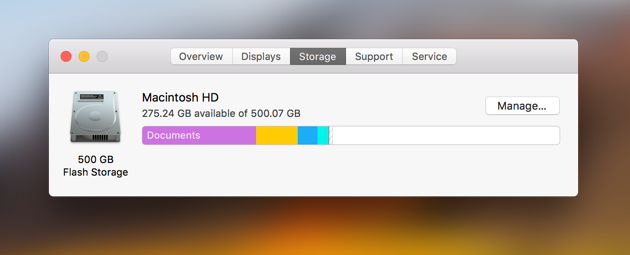

- How much hard drive space for mac os x how to#
- How much hard drive space for mac os x pro#
- How much hard drive space for mac os x free#
Since Mac OS 10.7, Apple has also included a built-in tool to view both free disk space and detailed disk usage that can be accessed through the “About This Mac” window.
How much hard drive space for mac os x how to#
RELATED: How to Open Finder with a Keyboard Shortcut on Mac How to See Detailed Disk Usage in “About This Mac” Once you only have a few gigabytes free, then it’s time to think about deleting things to make room for the system to function properly. You can repeat this step with any drive connected to your Mac by clicking on the drive’s name in the Finder window sidebar. You’re looking for a line that reads something similar to “904 GB available,” but with a different number, depending on how much free space you actually have on the drive. At the bottom of the window, you will see how much space is left on the drive. In the window that opens, click on the drive you’d like to check in the sidebar.
How much hard drive space for mac os x pro#
no other computer has as much performance as the mac pro it. (You can also use a little-known shortcut to open one from anywhere.) Limit 2 Per Member The Apple M1 chip takes Mac mini, the most versatile. Open a new Finder window by pressing Command+N or selecting File > New Finder Window in the menu bar. The most basic way to check free disk space on a Mac is by using Finder. After using my MacBook Pro (with 16GB of RAM) for two days without restarting, my swap file was 9GB after a restart it dropped to 0 bytes.How to Quickly Check Free Disk Space Using Finder When you reboot your Mac, it resets itself to zero and grows dynamically from there as needed. This swap file grows and shrinks dynamically, but typically requires several gigabytes of disk space. If your Mac doesn’t have enough RAM to perform an operation, it creates a “swap file” on your startup disk, and then uses that swap file instead of the RAM it needs. If you’re wondering why a shortage of space on your startup disk affects your Mac’s performance so dramatically, it results from the way macOS’s Virtual Memory (VM) scheme works. If you save (or download) a few large files, your disk will be nearly full, and your Mac will slow to a crawl.Īnd, if your startup disk has less than 10% of its space available, it won’t be long before you encounter slowdowns and spinning beachballs because of insufficient available disk space. If your disk has less than 20% of its disk space available, you’re headed toward trouble. Used tells you how much disk space is in use.Available tells you how much disk space is currently.Capacity tells you the size of your drive.These are the three salient items: Capacity, Available, and Used. You’re interested in three items near the bottom of the General section of the window: Capacity, Available, and Used. How Much Space is Left on my Disk?įirst, select your startup disk’s icon in the Finder and choose File–>Get Info (or use its keyboard shortcut, Command+I).Ī Get Info window with details about that disk will appear on the screen. So… let me offer you a quick lesson in disk space. Worse, many Mac users don’t even know where to look for that information on their Mac. In my experience, many (if not most) Mac users do not understand how close to capacity their startup disk is. And, you’ll notice that activities that used to happen almost instantly-such as launching apps, opening documents, or applying filters to photos - take much longer.
/FreeSpace-5769c0b53df78ca6e47b709f.jpg)
Did you know that your Mac’s performance deteriorates significantly as your startup disk fills up? As your startup drive gets closer to being full, the spinning beachball will appear and slow you down.


 0 kommentar(er)
0 kommentar(er)
